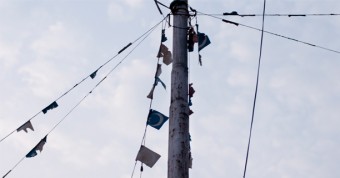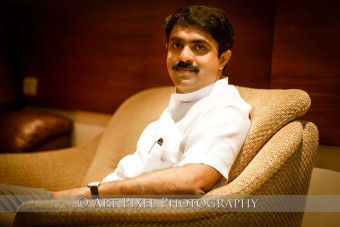Land Reclaimed Through Ancestors’ Swweat Shrivels Away
It was a feat of technology, accomplished through painstaking planning and Herculean determination. A thousand years ago, the people of Neura village turned their floodplains into fertile agricultural land used for growing paddy. It was arguably one of the greatest engineering accomplishments Goa has ever seen, repeated along other estuaries. Now, the reclaimed plains – known as khazans – are shriveling away. Below, a villager tells Pantaleao Fernandes what this new reality means for him and the village – and the memory of his forefathers who built the khazans.
Can you see how these khazans have been invaded by the mangroves?” says Vinayak Sawant, a villager in his seventies. “That’s because of illegal flooding of waters into the khazans to rear fish. That has led to the demise of our fertile, organically cultivated fields.”
Vinayak leads the way along a long bund (embankment). On one side of the bund is the rivulet and on the other the khazan. The khazans are saline floodplains along Goa’s tidal estuaries. “These lands were reclaimed by our ancestors by preventing the ingress of the tidal waters using bunds with sluice gates,” he informs. “These wooden shutters automatically shut at high tide, thus preventing water from entering the khazans, and then open at low tide, draining out water that inadvertently enters due to any breaches in the bunds. Salt tolerant varieties of rice like Korgut and Assgo are grown in these khazans.”
Dondeshwar Deity
According to Vinayak, the khazans were once thriving with paddy. “People were appointed to watch the bund, to spot breaches and to repair them. One man would constantly patrol the bund. Every three years, the gate of the manos would be replaced. Those cultivating fields adjacent to the bund had to strengthen it, by replacing the clay layers that would erode in the rains. During those days, these fields grew abundantly.”
“Every twelve years,” Vinayak continues, “saline water was taken into the fields to eradicate the weeds. The field had to be dug up before April so as to get rid of all the weeds. Permission had to be obtained from the Communidade if you wished to dig in the monsoons.”
He blames the death of the khazans on the current system that has abandoned all these traditions. “Suddenly the whole system changed and came under the mamlatdars (taluka officer) and that spelt the end of the khazan fields.” Vinayak alleges that there is deliberate negligence of the khazan system and sluice gates by miscreants who let in saline water for pisciculture, thus disrupting the cultivation of the khazan lands.
Centuries ago, Neura was a thriving village that boasted not only fertile fields, but also a major ship building centre in the time of the Kadamba rulers. The villagers worshipped the deity called Bhindimahadev. After the Portuguese arrived, some Hindus fled across the river to neighboring Madkai along with their deity. Centuries passed and the attitude of the Portuguese authorities towards the Hindus became more tolerant. It was then that the ancestors of Vinayak Sawant decided it was time to return to the land of their ancestors.
Vinayak, though advanced in years, is still hale and hearty. “Seven generations ago the fertile fields and the many manos of Neura attracted my ancestors back,” he tells me, adding that his forefathers established a shrine that has become the oldest temple in the village.
The grandest heritage structure in Neura is the Church of St John the Evangelist, built in 1541. At the front of the church is a rectangular stepped basin that resembles a temple tank, and the regular offering of a coconut, banana and a betel nut points to a Hindu connection. It is watered by a spring that once provided the villagers clear water to drink and bathe in. Even a dressing room still exists. Unfortunately, the water is no longer usable as the tank is no longer maintained.
In front of the old Panchayat office, the bust of a man evokes curiosity. It is erected in the memory of Bernardo Peres da Silva, who in the early 1800s was the equivalent of a governor appointed by the King of Portugal.
Another well known personality was Monsignor Castilho de Noronha, a priest-politician, who was a Canon and member of the Portuguese parliament in Lisbon for three consecutive terms. He was a professor at the Rachol Seminary and authored books on Buddhism and philosophical Brahmanism. The main road passing through Neura, connecting Pilar to Old Goa is named after him.
Neura may have nurtured great men and has reasons to be proud of its diligent agriculturists working to reclaim estuary land in its ancient past. But in recent times Goa’s politicians have declared some rather foolish plans for this village. In its 2012 election manifesto, the Congress party had promised to erect a new ‘bridge’ in the landlocked Neura village where no river exists. “Parallel Zuari Bridge will be built along with bridges at Terekhol … Madkai and Neura,” read the Congress manifesto in its ‘Infrastructure’ section. The then Chief Minister tried to save face on the ‘Bridge to Nowhere’ in landlocked Neura by saying that there must be some place in Neura where a bridge might be necessary!
In the meanwhile Vinayak Sawant awaits wiser men who will come and redeem the dying khazan lands of his beloved village.
.
.,,,
.





